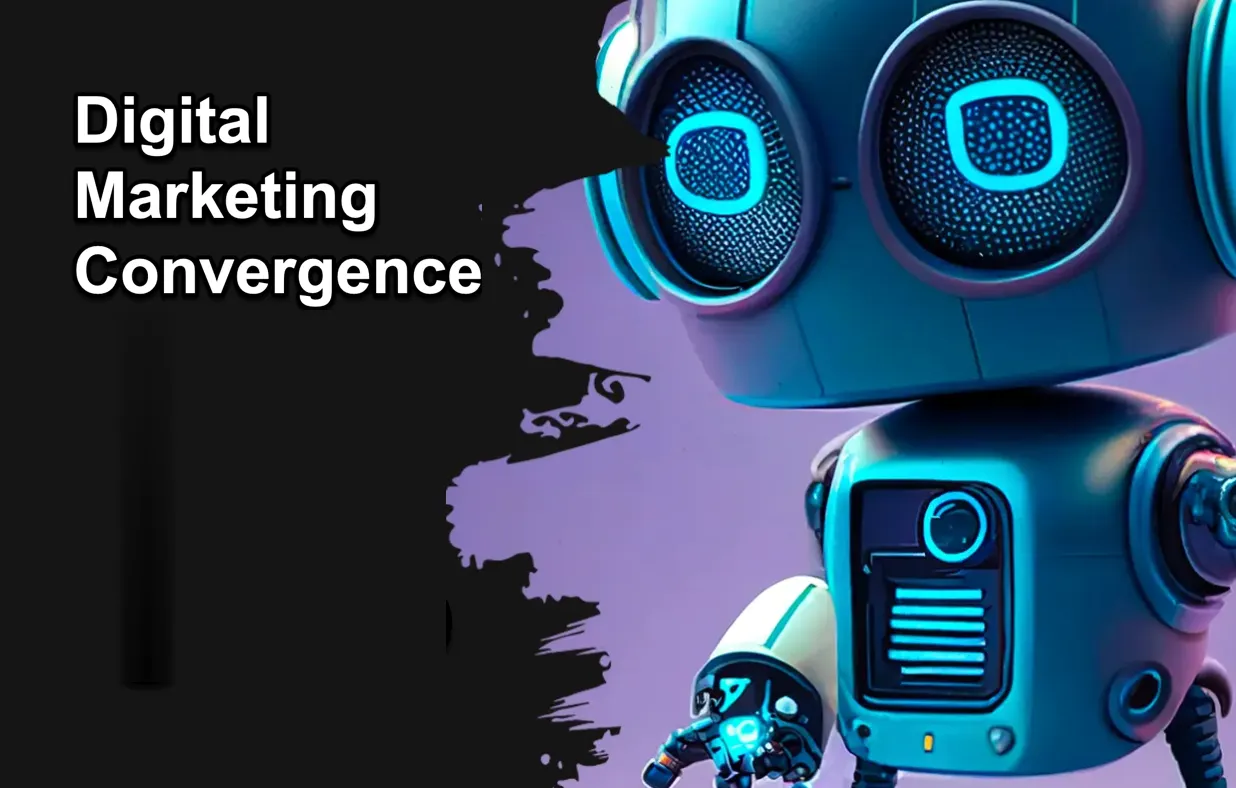How AI and Machine Learning are Affecting Digital Marketing
How AI and Machine Learning are Affecting Digital Marketing
Jul 14, 2022

AI and machine learning (ML) are having a huge impact in the world of digital marketing. This is partly because Google is becoming increasingly more AI-driven, attempting to answer search terms as questions rather than simply trying to match them to keywords used in a post. AI and ML are also becoming more prevalent as more and more businesses start employing the use of chatbots. And it’s true that as machine-learning algorithms are applied to huge amounts of data, they will be able to make better use of the large amounts of information an average website will collect about its users.
It Allows You To Learn From User Behavior
Huge amounts of data are collected by almost every website by tracking visitors. Every time someone visits a website, Google Analytics and other tools will make a note of when they arrived, which links they followed to get there, what pages they looked at, how long they stayed, sometimes even where their mouse cursor was at specific times and where and when it moved. These are valuable data points that can key marketers in to what’s effective and ineffective on any given page of a website.
Sadly, a lot of this information is often wasted. But with ML, it’s now possible to turn that data into information you can act on.
We see ML used when we look at the recommendations on Amazon. These recommendations are generated as a result of looking at patterns of behavior across millions of customers. By doing this, Amazon’s algorithms can learn which purchases tend to follow one another. If you buy this soap brand, you’ll be more likely to buy this candle as well, so it recommends the candle to you a few days later.
That in turn means that Amazon can contact you at the precise right time, with the precise right deal that you might be interested in, all with the express purpose of getting you to buy more.
The ML algorithm can also track when it’s best to send you that suggestion. It can track when certain customers buy products more often, or specific days in the week when it’s best to send you a notification.
We also see this when we browse other places on the web. Because cookies get stored on our computers, sites can share information with each other. This means that an advertisement might appear on an unrelated site for an Amazon product that the algorithm “thinks” you’ll want.
Likewise, you might be able to identify that if a user has come from website X, they may be more likely to buy product Y.
All this becomes even more effective for websites with user accounts. These can track the behavior of individuals over long periods, which allows them to gather far more data about their spending habits and their likelihood of making particular purchases. It can even track demographic data which can give you even more insight into your customers and how they choose to spend their time on your website.
Smarter Search with Google
Google has already adopted an AI-heavy approach to its search engine. It even described itself lately as an “AI-first company.” This AI, an algorithm named RankBrain, is designed to better understand what people mean when they search for something. It no longer tries to only match keywords with text in an article, but instead aims to properly understand what the user is asking within a language’s context to provide a more relevant answer.
Google is doing this to improve Google Assistant, another piece of AI technology that it hopes more people will use to get information from the web.
Previously, Google worked by looking for exact keyword matches. If someone searched for a phrase such as “buy hats online,” Google would look for a website that featured that exact phrase somewhere in the text. This is a simple method to figure out search intent but does have some flaws.
Google has been looking for ways around these flaws, and over the years they’ve implemented numerous systems to create a more accurate Search Engine Results Page (SERP). Integrating AI is the next big step in changing how search engines operate.
RankBrain changes the playing field by splitting search phrases up into “word vectors” that categorize search terms by their meaning and context. When looked at this way, RankBrain can then attempt to understand the question and find an actual answer online.
This also allows Google to avoid making mistakes when looking at words with more than one meaning. For example, if you were to search for “decision trees,” Google might be confused between the flow chart and decisions about trees. The old Google might have brought up an article telling you how to “make decisions about trees” in the SERP.
The new way in which Google is beginning to innovate will look for related terms and phrases in the text, which could include such things as “flow chart” or “choices.” By recognizing that these terms are also in the text, Google will know that the user was asking about decision trees (flow charts) and not tree decisions.
Google’s algorithm and AI are getting smarter all the time and are becoming increasingly adept at second-guessing users while knowing how to provide them with useful answers. This changes the game for internet marketers too, who now need to think in terms of synonyms and related terms, instead of just repeating the same phrase over and over.
A smarter Google will require smarter, honest marketing.

Chatbots
A chatbot is a little AI assistant that lives right on your website, or that users can contact through social chat apps such as Facebook Messenger. The idea is that your chatbot will be there to answer questions, give advice, and even suggest recommendations – all without you or your business having to raise a finger.
Users can speak to a chatbot through a chat window as though it were a real person. They can then ask questions using natural language, and the chatbot will respond by recognizing certain phrases, questions, and contexts, and providing an answer.
All of this can improve customer satisfaction without requiring you to spend large amounts of money. While most companies would love to be able to answer every question immediately, that would require a huge support team, which is often outside of the budget of many smaller companies. But automated chatbots can answer the vast majority of questions that come up so that only the queries that can’t be answered, usually from a flow chart, need to be dealt with by a person. Even then, though, the chatbot can explain that they can’t answer their question right away and can send contact details to the support team so that their question can be answered by one of them.
But where things get super interesting is when you use chatbots for marketing.
How might this work? One example would be to try and increase conversion rates when a visitor lands on a website. Normally, you might use some sales text, a call-to-action, and rely on users following the right links and buttons on your page to find the product listing for them. Often this would result in confusion and frustration, and many visitors would leave before having a look around.
Bounce rates are high across the Internet.
But with a chatbot, this could be very different. Imagine if the moment someone landed on your website, a chatbot asked them what they were looking for. When they answered, that chatbot could take them straight to the relevant page ready for them to buy. No searching through the site, no complications.
What’s also great about this is that even if a visitor doesn’t buy anything, they will have shared their ‘intent’ simply by telling the chatbot what they were looking for. This kind of data can be hugely beneficial for marketers. Marketers will be able to start looking for patterns. You can tally up why people come to your site and design certain aspects of it around that intent.
Data-Driven Website Design
When you build a website, you are often tempted to fall back on the things that you like personally: the designs that you find most appealing and the navigation that seems intuitive to you.
Of course, this is not the correct way to go about web design from a business standpoint. Ultimately, it shouldn’t matter what you find appealing. It should only matter what your audience will interact well with – after all, they’re the ones you’re targeting.
More to the point, if profit is your main goal, then your website should be designed in such a way that it drives traffic and converts that traffic into sales.
The smarter business owner will fall back on the advice of their web designer. Your web designer will use market research to help inform site design. One major aspect of online marketing research is using split tests to determine how users interact with different website designs.
A split test means creating two or more slightly different versions of the same website, to see which one performs the best. You then adopt the style of the most successful version. But what if those split tests could occur all around the world and you could collect data from millions of samples?
And what if your web design adapts and evolves to become more and more efficient at guiding the users to that buy button? This is what a machine-learning-driven web design promises. It could look at patterns of behavior on your site, across multiple websites, or even for a particular user. From there, it could then adapt your web design to become better at encouraging people to click where you want them to click and read what you want them to read.
The ultimate expression of this would be AI-led web design that can adapt in real-time to the user viewing it based on specific demographics or their personal history. It would become instantly appealing to that particular customer and would employ strategies proven across millions of tests to help encourage them to buy, sign up, or whatever the goal of the website is.
This could help site owners increase their conversion rates while removing all of the guesswork of web design. Of course, it would somewhat hurt the artistic integrity of your site, but if your main concern is business, then this would be web design’s final and ultimate form.
The Future
ML and AI are only going to develop more complex systems. Eventually, it will be able to alter the way that a website is laid out. It could, for example, only show ads that are statistically more likely to result in a purchase. The possibilities are plentiful and exciting.
In the future, our browsing experience will always be tailored precisely to our specific interests and needs based on information from countless other similar users. The result will be a web that is far more efficient and can generate much higher conversions and click-through rates for marketers.
For now? Just keep collecting and analyzing that data. It’s all you need to make your next sale.

